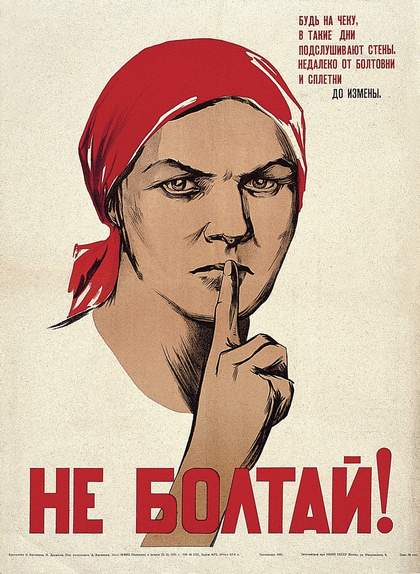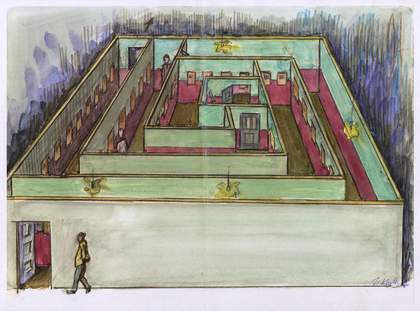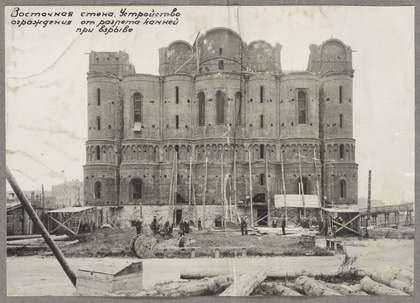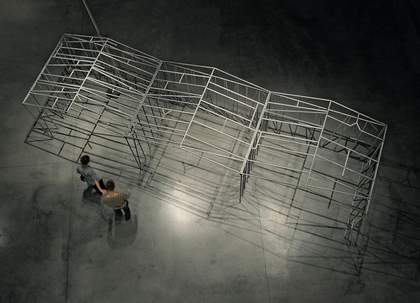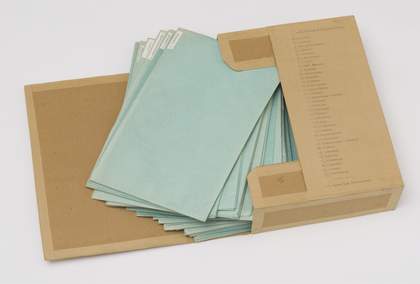
MANI Folder 3 1982, compiled by Andrei Monastyrski's friends Elena Elagina and Igor Makarevich
Courtesy Tate Photography
It was Ilya Kabakov who, at the end of 1979, encouraged me to start compiling documentation relating to the performances of Collective Actions, the Moscow-based group of artists and thinkers that I had founded with Lev Rubinstein and Nikita Alekseev in 1976. Kabakov called me to his studio to do a tape recording of his recollections of our early actions, in which he had also taken part – ‘So that it is not forgotten!’ he said to me at the time.
The following year, I compiled the first volume of the book Trips Out of Town, dividing the material into three sections: Description (descriptive texts), Narrative (stories by observer-participants of the actions) and Discourse (theoretical articles and discussions), plus photographs. Then, in February 1981, as if by reflex – having developed a taste for compiling, selecting and editing material – I decided to continue this self-publishing activity by collating the first MANI (Moscow Archive of New Art) folder. Rubinstein, Alekseev and I had dreamt about a publication like this since we founded the group and it would become important in uniting our circle of Moscow conceptualists, activating it, and recognising it as both a ‘group of contributors’ and an art movement.
The structure of the first MANI folder was as follows: A5 envelopes containing photographs of artworks, along with brief biographies of the artists (or poets) who had created them, and a list of the included works. Also enclosed were stapled A4 notebooks featuring typewritten articles, collections of poetry and other material. Both the envelopes and texts were numbered, titled and systematised. (You see, classification had been a hobby of mine since childhood: I compiled various insect taxonomy charts, geochronological tables and an atlas of stars.)
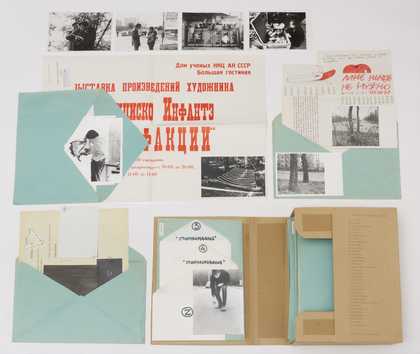
MANI Folder 3 1982, including contributions from Igor Makarevich, Ilya Kabakov, Vadim Zakharov, Nikita Alekseev, Francisco Infante, Georgy Kiesewalter and the Collective Actions group, among others
Courtesy Tate Photography
In all of this, there was an element of parodying the Soviet bureaucratic tendency to catalogue absolutely everything. This only became a deliberate decision, however, when assembling the MANI papers – a separate, but related, project undertaken from 1986 onwards. These had more of an album or book-like character than the purely archival MANI folders from the early 1980s. The papers were also considerably more discursive, usually resulting from extensive dialogues on general theoretical problems in philosophy and aesthetics and the (then) current state of affairs in the art that interested us: the advanced art of the USSR – that of our unofficial circle – and Western contemporary art. Both the folders and the papers were produced in four to five copies, three or four of which were permanently kept by friends, while one copy was circulated among a wider circle of artists, poets, writers, musicians and anyone who wanted to share in the work of the Moscow conceptualists.
MANI Folder 3 was purchased with funds provided by the Acquisitions Fund for Russian Art, supported by the V-A-C Foundation in 2016.
Andrei Monastyrski (born 1949, Pechenga) is an artist, poet, writer and theorist living and working in Moscow. Translation from the Russian by Dina Akhmadeeva.

